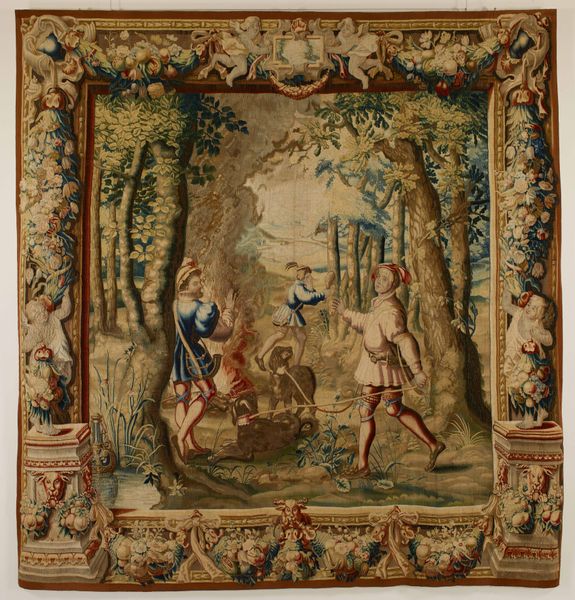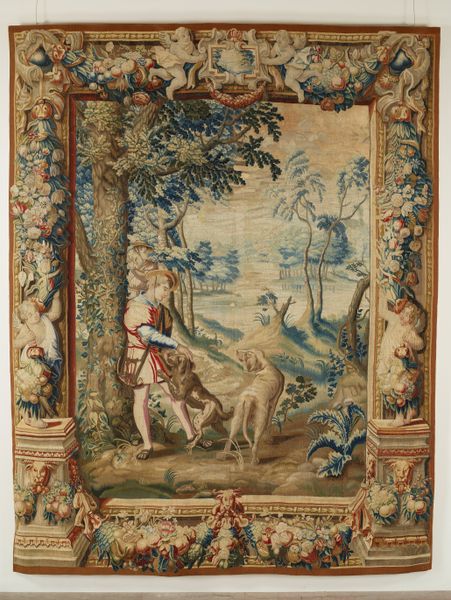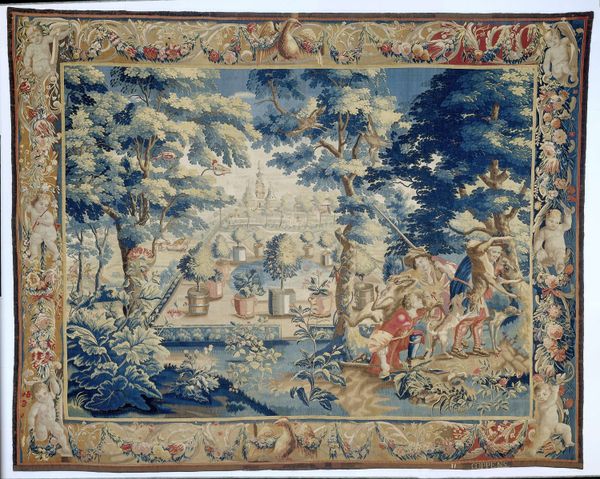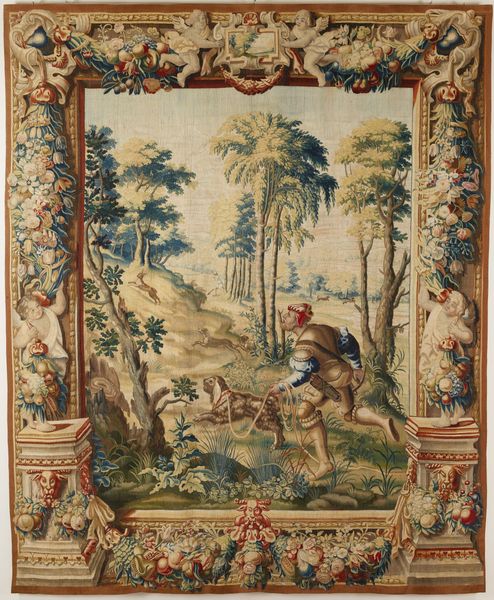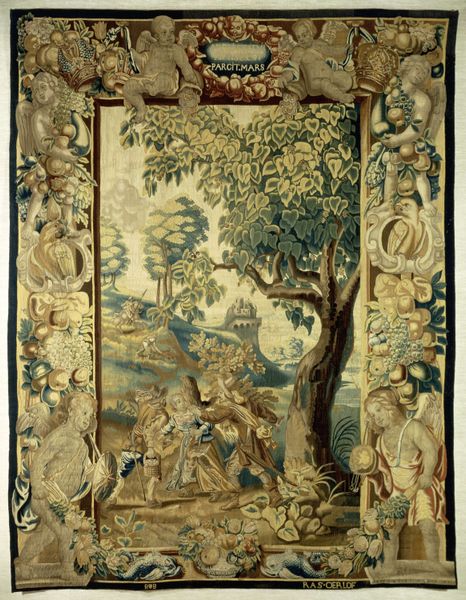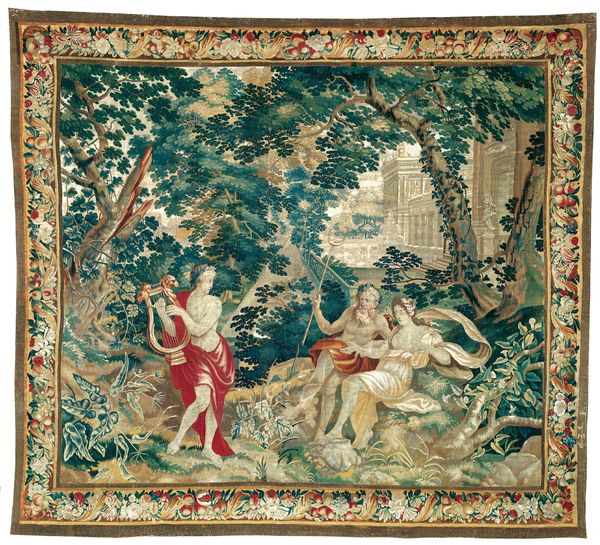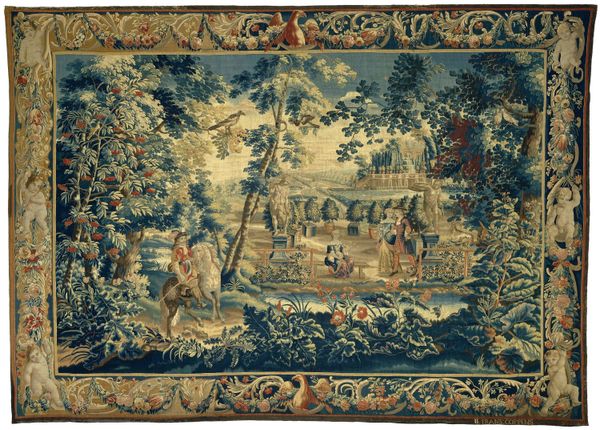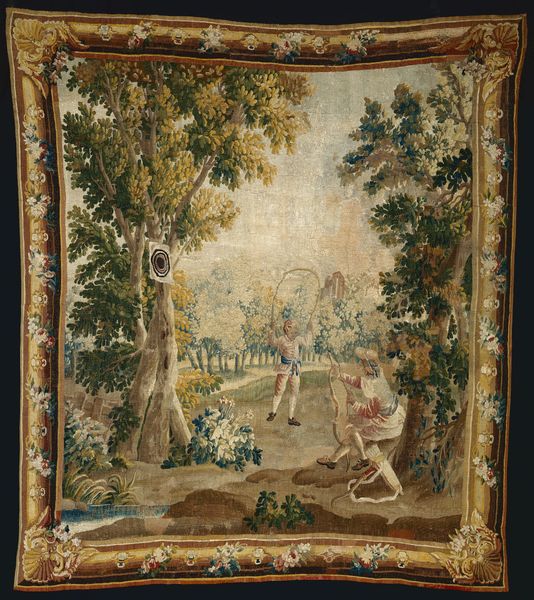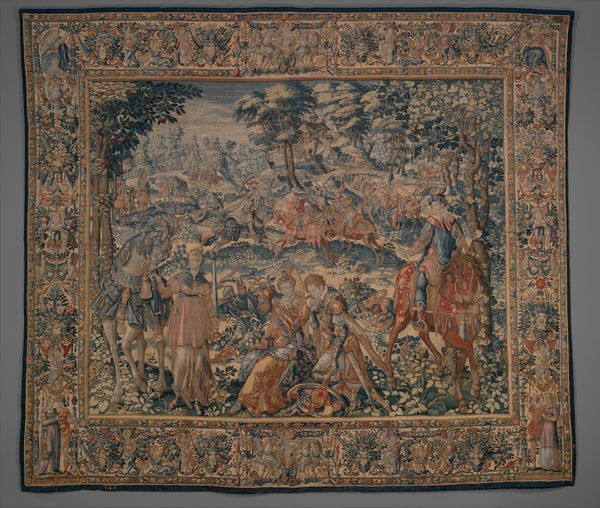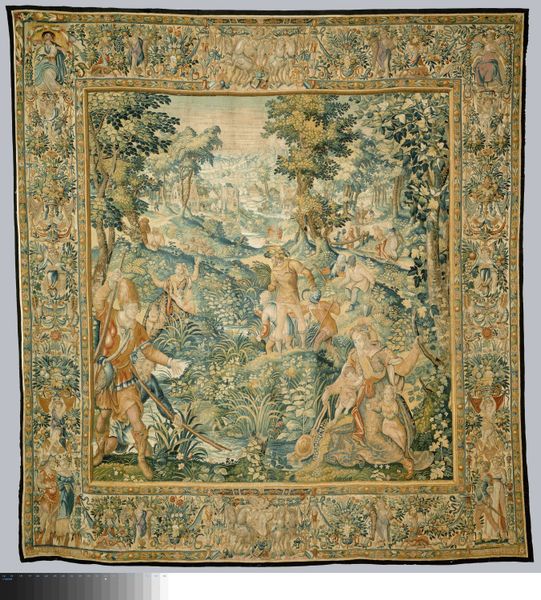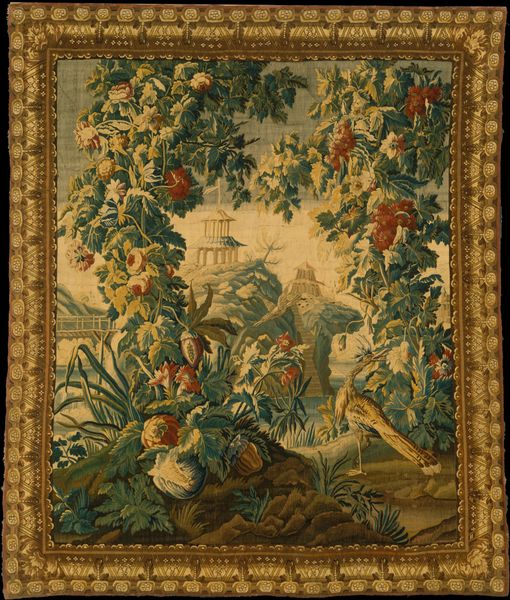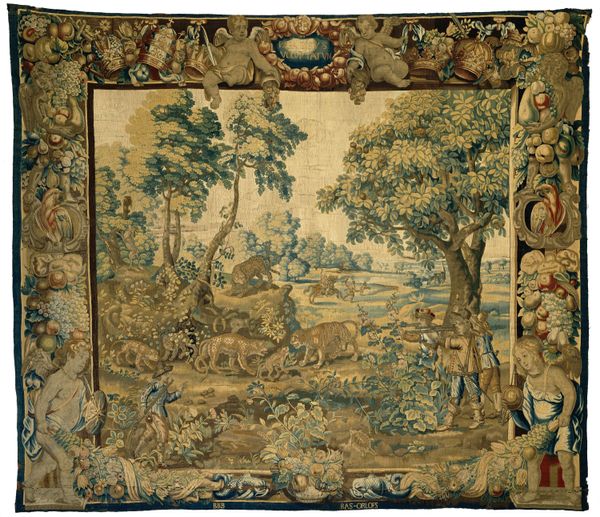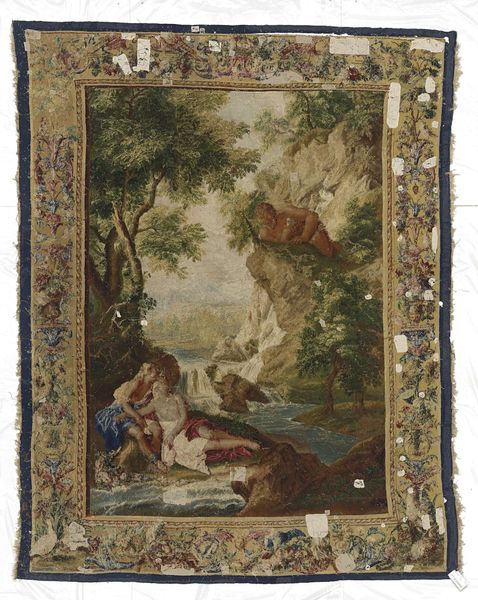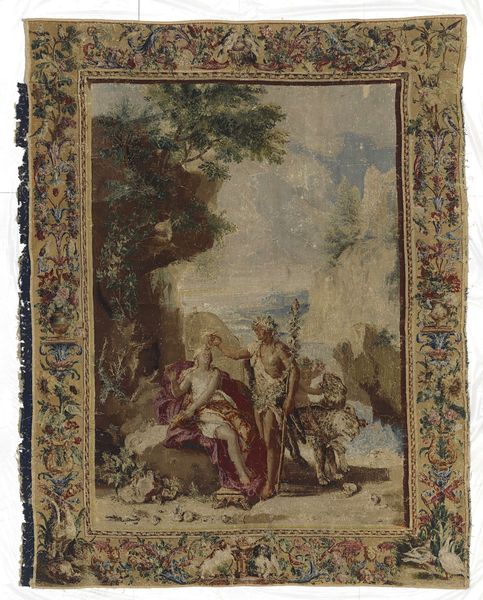
silk, textile
#
narrative-art
#
baroque
#
silk
#
landscape
#
textile
#
figuration
#
genre-painting
Dimensions: 159 1/2 x 150 3/4 in. (405.13 x 382.91 cm)
Copyright: Public Domain
Curator: What strikes me immediately is the incredible detail and the texture of this textile piece; the colors muted, perhaps, but full of life. Editor: Indeed. This is a tapestry, "Women Hunting the Fox", created around 1650. It is housed here at the Minneapolis Institute of Art, a product of its time, rendered anonymously on silk. What we see here reflects so much of the era's social fabric and power dynamics. Curator: Silk suggests luxury, of course, implying aristocratic patronage, and thus controlled output—how the narrative of the hunt is framed, quite literally. How are we to understand that "anonymous" designation? Was the maker unseen, unheard, erased, or were they, instead, enmeshed within a larger system of production and communal creativity? Editor: "Anonymous" becomes a very interesting label indeed when you consider that silk tapestries of this caliber were deeply entrenched in the elite’s pursuit of refined leisure. Displaying such intricate scenes of the hunt bolstered the standing of their households. Tapestries also functioned as a practical, though lavish, tool for insulating the grand chambers of royal residences, helping to regulate internal temperatures year round. Curator: It's fascinating to consider this tapestry within those rooms, influencing the air, reflecting light, dictating the terms of spectacle. Can we disentangle the image, the figures on horseback chasing down that poor fox, from its means of production? What of the individuals who painstakingly dyed the silk fibers and knotted each strand? How does such craftsmanship fit into art historical frameworks? Editor: Exactly! Its acquisition, its placement, and even its preservation speak volumes about how tastes evolve—and how certain art forms rise and fall in prominence. Baroque tapestries such as these often become emblematic of bygone social hierarchies and artistic sensibilities. But seeing them today prompts valuable critical discussions. What does hunting come to represent when interpreted through our 21st-century understanding of nature and ecology? Curator: Placing materiality first, then, grants us a framework for recognizing what and who got lost. Editor: Precisely! It forces us to examine the tapestry's place within a matrix of labor, privilege, and shifting public sentiment, ensuring a much more complete portrait of cultural history.
Comments
minneapolisinstituteofart almost 2 years ago
⋮
In the foreground, a huntsman—a professional director of hounds—commands dogs in the distance with blasts from his horn. Farther afield, a female rider balances her spear while training her gaze on the fox to her right. The declining deer population at the time had forced hunters to seek alternative game such as foxes and other “pests.” By the late 1700s fox hunting had become a faster, riskier, and very popular sport. Many women were edged out, whether from concern for their well-being or for fear they might outpace their male companions. Women hunters in some regions felt strong social pressure to ride sidesaddle or in carriages—“ladylike” indeed but not permitting the speed of riding astride. The hunter in this scene rides astride.
Join the conversation
Join millions of artists and users on Artera today and experience the ultimate creative platform.
